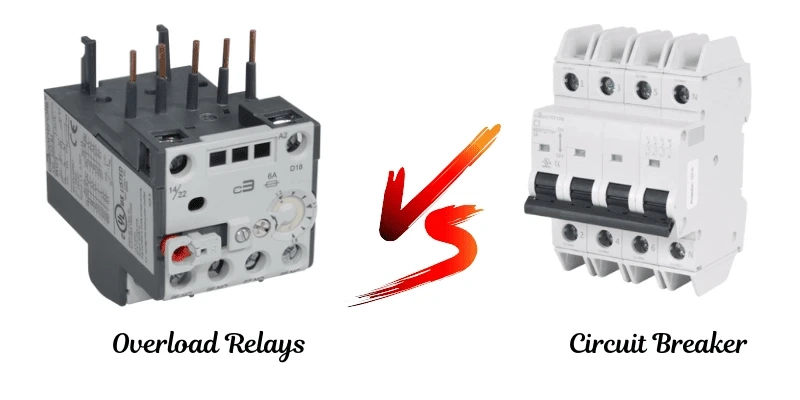While both overload relays and circuit breakers are essential for protecting electrical equipment, they serve distinct roles and have different operating principles. Understanding these differences is crucial for designing a reliable and efficient electrical protection system. Here are additional points to consider:
1. Primary Function and Protection Scope
- Overload Relays: Specifically designed to protect motors and other equipment from prolonged overcurrent or overload conditions. They ensure that the motor does not overheat by monitoring and controlling the amount of current flowing through it over time.
- Circuit Breakers: Provide broader protection against various types of electrical faults, including short circuits, ground faults, and instantaneous overcurrent spikes. They protect the entire electrical circuit and prevent potential hazards such as fires and equipment damage.
2. Operating Mechanism
- Overload Relays: Typically use thermal or electronic methods to detect overloads. Thermal overload relays use bimetallic strips that bend with heat, while electronic overload relays use sensors and microprocessors to detect and respond to current levels.
- Circuit Breakers: Use electromagnetic and thermal mechanisms to detect faults. Electromagnetic components respond instantly to short circuits, while thermal components react to sustained overcurrent by bending a bimetallic strip.
3. Response Time
- Overload Relays: Have a delayed response to allow for short-term current spikes that do not pose a threat to the motor. This delay helps to avoid unnecessary interruptions in operation.
- Circuit Breakers: Act almost instantaneously to disconnect the circuit during severe faults like short circuits, providing immediate protection.
4. Reset Mechanism
- Overload Relays: Generally require manual resetting after tripping to ensure the fault has been addressed and to prevent automatic restart, which could cause further damage if the issue persists.
- Circuit Breakers: Can be reset either manually or automatically, depending on the design. Some circuit breakers have an automatic reset feature, but it is essential to ensure the underlying issue is resolved before resetting.
5. Integration in Electrical Systems
- Overload Relays: Are usually integrated with motor starters and are a part of the motor control circuit. They work alongside contactors to provide comprehensive motor protection.
- Circuit Breakers: Standalone devices installed in electrical panels to protect entire circuits. They can be used in conjunction with overload relays for layered protection but serve a more general role in safeguarding the electrical system.
6. Customization and Adjustability
- Overload Relays: Offer adjustable settings to tailor the protection to the specific motor or equipment they are guarding. Settings can be fine-tuned based on the motor\'s full load current and operating conditions.
- Circuit Breakers: Typically have fixed settings designed for the rated current of the circuit they protect. Some advanced circuit breakers offer adjustable trip settings, but this is less common.
7. Cost and Application
- Overload Relays: Generally more cost-effective for motor protection and are specifically chosen based on the motor\'s specifications. They are ideal for applications where precise motor protection is necessary.
- Circuit Breakers: Can be more expensive due to their broader protection capabilities and are used in a wide range of applications, from residential to industrial settings. They are essential for overall circuit protection but may not provide the specialized protection that motors require.
8. Maintenance and Testing
- Overload Relays: Require regular maintenance to ensure they function correctly, including testing the trip mechanism and inspecting for wear and tear.
- Circuit Breakers: Also need periodic testing and maintenance, particularly in industrial applications where the demands on electrical systems are high. Testing ensures that the breaker will respond correctly in fault conditions.
9. Application-Specific Features
- Overload Relays: May include additional features like phase failure protection, which detects and responds to phase loss or imbalance conditions, crucial for three-phase motor protection.
- Circuit Breakers: Can come with advanced features such as arc fault detection and ground fault interruption, providing enhanced protection for specific scenarios like residential wiring and sensitive electronic equipment.
By understanding these detailed distinctions, engineers and technicians can make informed decisions about using overload relays and circuit breakers in their electrical systems. Both devices are integral to ensuring the safety and reliability of electrical equipment, but their specific applications and functionalities must be carefully considered to achieve optimal protection.



